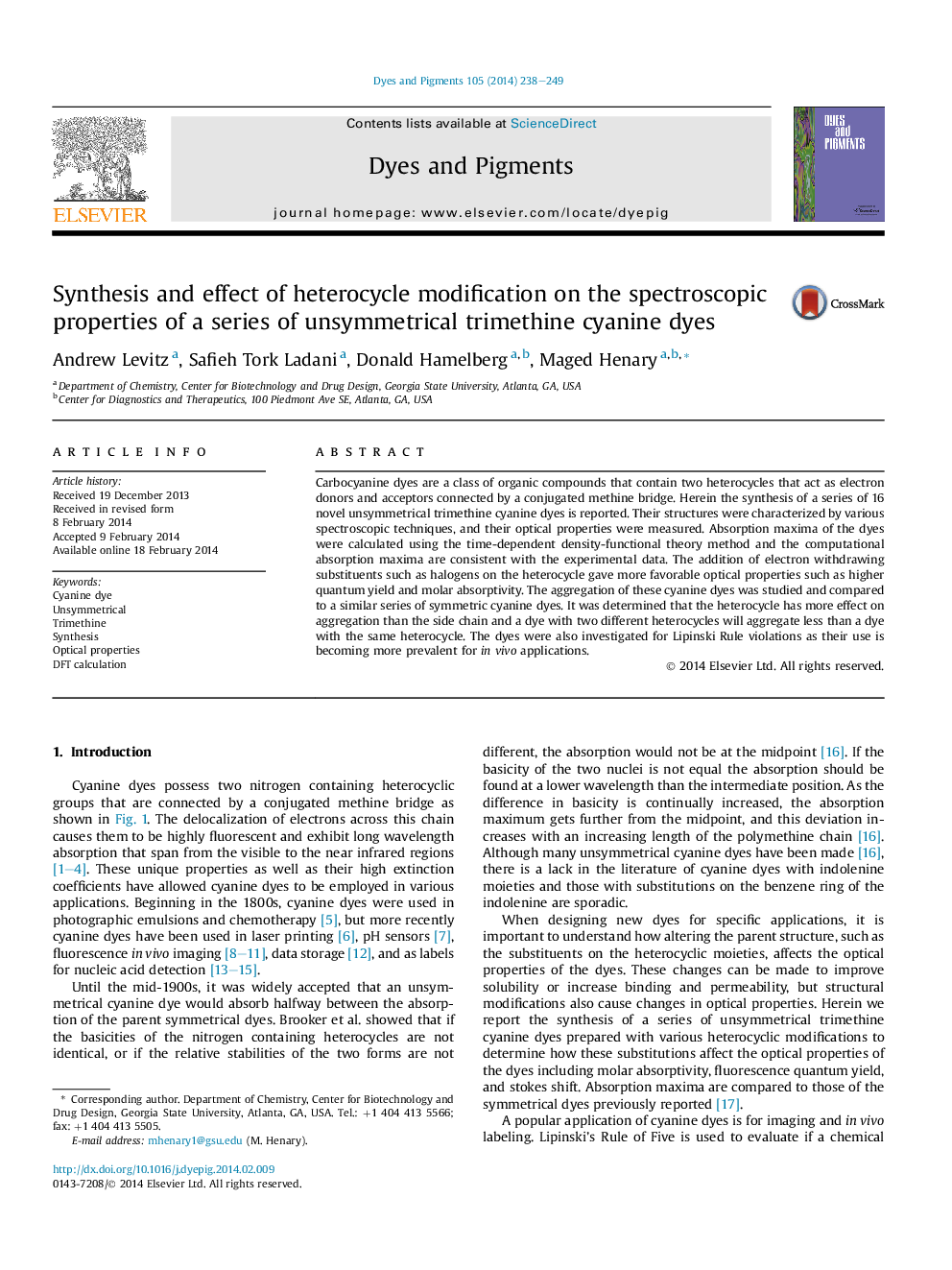| Article ID | Journal | Published Year | Pages | File Type |
|---|---|---|---|---|
| 176262 | Dyes and Pigments | 2014 | 12 Pages |
•A series of 16 novel unsymmetrical trimethine carbocyanine dyes was synthesized.•Absorption, fluorescence, stokes shift, and quantum yield were measured.•Optical experimental values were compared to their theoretical TD-DFT evaluations.•Unsymmetrical dyes were shown to aggregate less than similar symmetrical dyes.•The dyes were investigated to determine if they met Lipinski Rules.
Carbocyanine dyes are a class of organic compounds that contain two heterocycles that act as electron donors and acceptors connected by a conjugated methine bridge. Herein the synthesis of a series of 16 novel unsymmetrical trimethine cyanine dyes is reported. Their structures were characterized by various spectroscopic techniques, and their optical properties were measured. Absorption maxima of the dyes were calculated using the time-dependent density-functional theory method and the computational absorption maxima are consistent with the experimental data. The addition of electron withdrawing substituents such as halogens on the heterocycle gave more favorable optical properties such as higher quantum yield and molar absorptivity. The aggregation of these cyanine dyes was studied and compared to a similar series of symmetric cyanine dyes. It was determined that the heterocycle has more effect on aggregation than the side chain and a dye with two different heterocycles will aggregate less than a dye with the same heterocycle. The dyes were also investigated for Lipinski Rule violations as their use is becoming more prevalent for in vivo applications.
